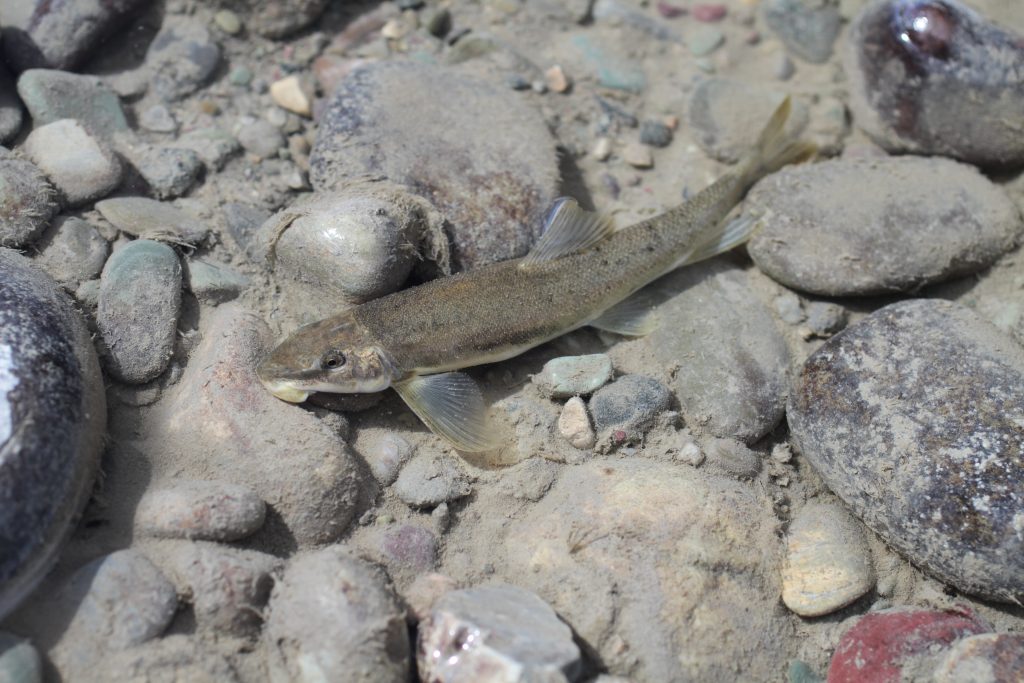What happens to fish when the pond turns to ice?

Lakes and ponds that fish live in over the winter do not freeze all the way to the bottom. A layer of water at the top of the pond freezes. The ice and snow on top insulate the water, helping keep the water at around the same temperature throughout the winter. The air against your face as you skate on a pond can be very cold one day and then warm another, depending on the weather, but the temperature of the water under the ice doesn’t change as quickly. So keeping from freezing under the ice is actually quite easy for a fish, even during the coldest winter day.
Fish are cold-blooded, so their body temperature changes as the temperature of the water they’re swimming in changes. Most fish spend the winter at the bottom of the lake, where the water is the warmest. During the cold winter months, fish eat less, move around less, and they also don’t need to breathe as much. That’s really important, because oxygen can be hard to get from the water under the ice. Oxygen is something that all living things need to survive. We mammals get it from breathing air, but fish get it from the water. While the ice on top of a pond helps keep the water warm, it also makes it hard for oxygen to get into the water. Most of the time this is fine. The fish will slowly use up the oxygen in the water until spring comes and the ice melts. But certain types of pollution take away some of the oxygen inside the water, which makes it hard for fish to survive the winter. To help keep the water healthy for fish, make sure you use biodegradable soap for washing things in your driveway, don’t dump oils or other chemicals down storm drains, and pick up litter.
This fun fact originally ran in Nature Alberta Magazine - Winter 2022
